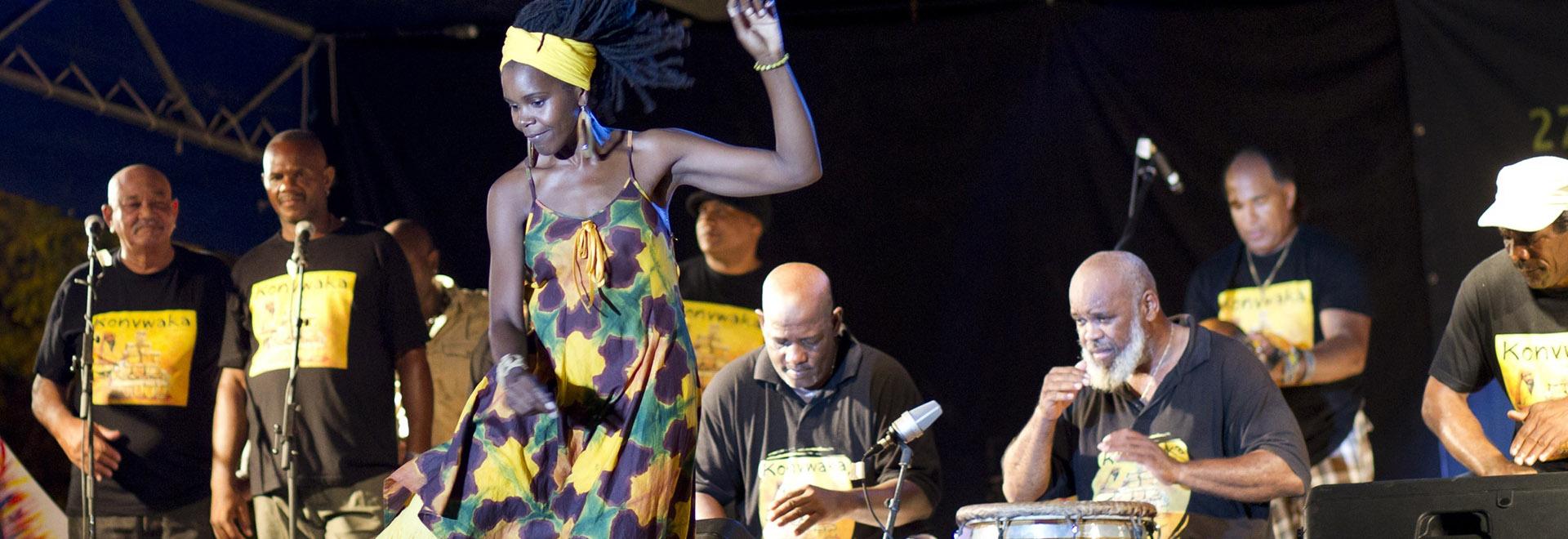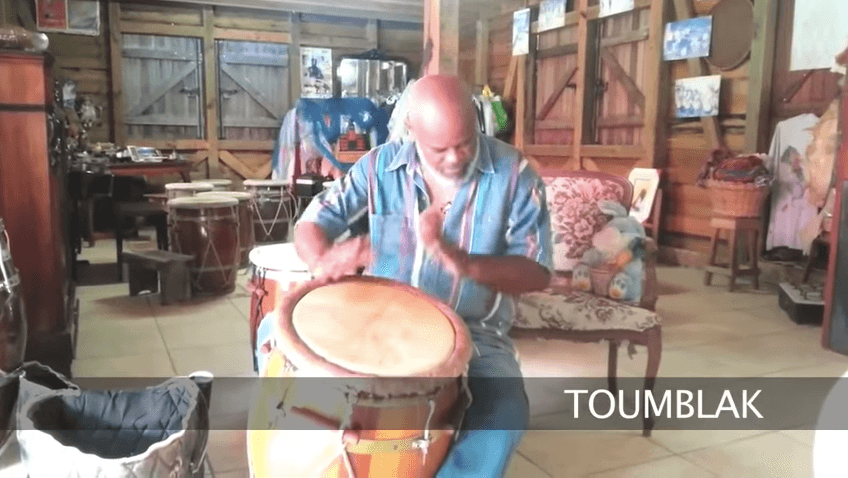7 Rhythms of Gwo-Ka
Toumblack, Graj, Mende, Padjambel, Kalandja, Woulé, Lewoz.
Each rhythms determines a mood, a philosophy, an event.
The 7 rhythms are the heritage of the Guadeloupe Islands, and they are classified as a Intangible Cultural Heritage of Humanity by UNESCO.
Toumblack is a two-sound rhythm, fast which expresses happiness, love, and good mood. This rhythm is used a lot in performances, it introduces a resumption as a signal of change of step.
Kalandja is a two-sound rhythm. It is played slowly to express heartache and sadness. It can also express happiness, enthusiasm at the moment where the rythm become faster.
Woulé is a three-sound rhythm. It accompanies the work during the manioc production.
Padjambel is a three-sound, slow rhythm. A Creole waltz, it was danced with a scarf in the old days.
Mennde is a four-sound, fast rhythm. It alludes to escape and party. It’s an invitation to walk in parades and it gives a rhythm to Carnival.
Graj is a four-sound rhythm, slower than Toumblack. During the harvests, work in sugar fields was paced by this rhythm.
Lewoz is a two-sound rhythm. It is mainly played on Grande-Terre and Basse-Terre. This rhythm has given its name to a celebration around the « Ka » drums. It is the reference rhythm of Gwo Ka.
Les îles de Guadeloupe : “7 manniè dè chanté, 7 manniè dè konyé, 7mannié dè dansé. Gwoka sé lombrik a Gwadeloupeyen” (Eric Cosaque, Chanteur).
Guadeloupe Islands:”7 ways to sing, 7 ways to beat, 7 ways to dance. Gwo Ka is the soul of Guadeloupean” (Eric Cosaque, Singer).
More about Gwo-Ka
-
 Gwo-Ka Gwo-Ka is now inscribed on the UNESCO List...
Gwo-Ka Gwo-Ka is now inscribed on the UNESCO List... -
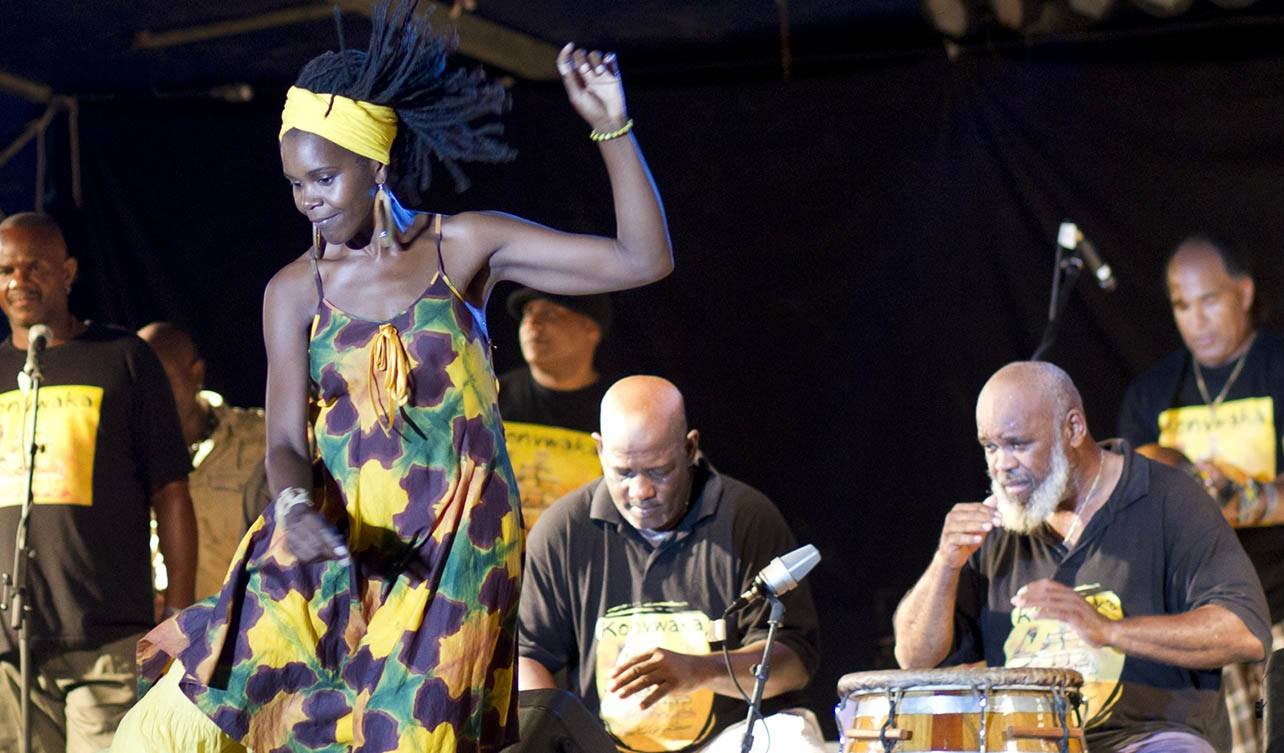 7 Rhythms of Gwo-Ka Toumblack, Graj, Mende, Padjambel,...
7 Rhythms of Gwo-Ka Toumblack, Graj, Mende, Padjambel,... -
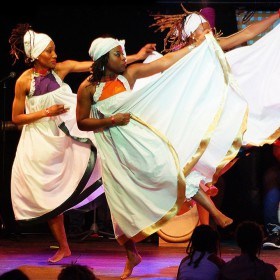 Gwo-Ka Dance Class Created by Yves Thole and...
Gwo-Ka Dance Class Created by Yves Thole and... -
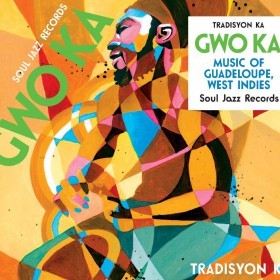 Gwo-Ka and Jazz fusion Those two musical styles...
Gwo-Ka and Jazz fusion Those two musical styles... -
 Lena Blou Since her encounter with Jacqueline Cachemire-Thole,...
Lena Blou Since her encounter with Jacqueline Cachemire-Thole,... -
 The ``Ka`` Instrument Ka is a drum used to...
The ``Ka`` Instrument Ka is a drum used to...

